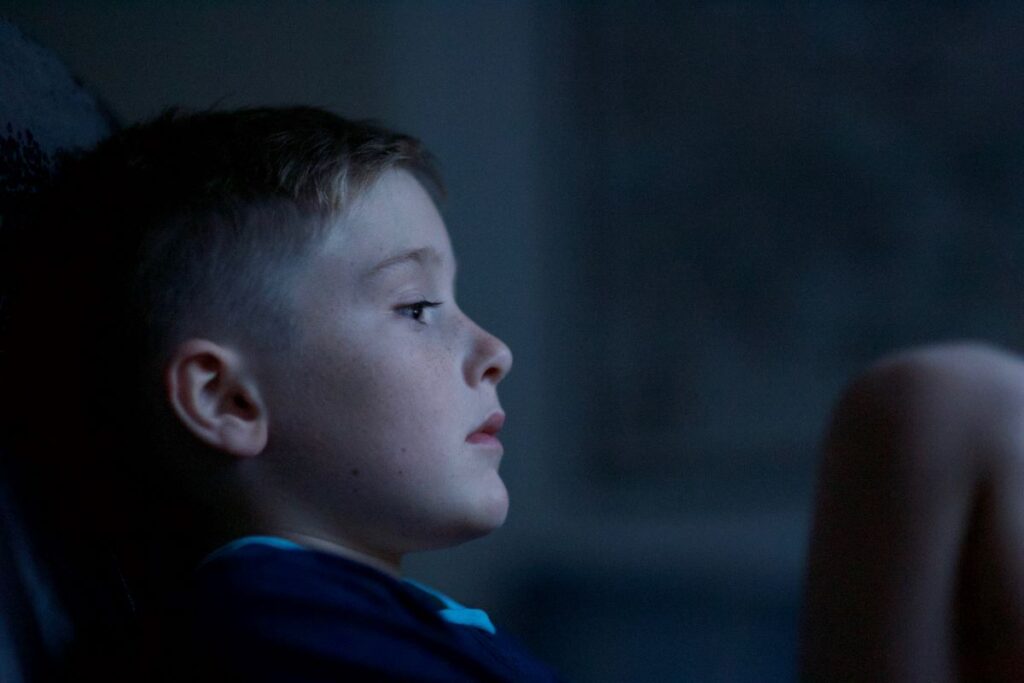
Anxiety is a common mental health problem which children experience to varying severities. Children with a diagnosis of an anxiety disorder have been found to also experience low mood, substance misuse, difficulties in social situations, and to underachieve at school (Ranoyen et al., 2018; Seligman & Ollendick, 2011). However, children are often overlooked if they do not meet criteria for a specific anxiety disorder diagnosis, even though the anxiety they experience is having a significant impact on their life (Beesdo et al., 2009). This may lead to other difficulties as previously mentioned. Therefore, it is essential that evidence-based psychological therapies, such as cognitive-behavioural therapy (CBT), are tailored to the child and their experience of anxiety.
Although CBT for various anxiety disorders is effective (Cartwright-Hatton et al., 2004; Compton et al., 2004; Seligman & Ollendick, 2011), a transdiagnostic approach (i.e., Unified Protocol for Transdiagnostic Treatment of Emotional Disorders in Children [UP-C]; Ehrenreich-May et al., 2018) may also be beneficial to those who do not meet criteria for a specific anxiety disorder diagnosis or those with multiple presenting problems, for instance, anxiety and low mood. The UP-C involves integrating techniques to address difficult emotions and unhelpful emotionally driven behaviours. Therapeutic techniques used include: challenging and replacing unhelpful thought patterns, opposite action, problem-solving, graded exposure, increasing activity level, and practicing mindfulness (Ehrenreich-May & Bilek, 2012; Ehrenreich-May et al., 2018). Additionally, parents are involved in therapy, and their goals are incorporated to improve the efficacy of UP-C and assist their child in learning and practicing skills learned in therapy.
The UP-C is unique due to the focus on emotions and integration of several cognitive-behavioural techniques into one intervention (Ehrenreich-May et al., 2018; Sherman et al., 2018). If emotional regulation strategies can be implemented prior to anxiety and low mood worsening, this could possibly prevent further development of unhelpful coping strategies and impact on daily functioning (Bilek & Ehrenreich-May, 2012; Ehrenreich-May et al., 2009). However, few studies have examined the use of UP-C with children who do not quite meet criteria for anxiety disorder diagnoses. Therefore, the authors aimed to investigate the efficacy of UP-C for a child with mild anxiety and depression.

Transdiagnostic therapeutic approaches may be beneficial to children who do not quite meet criteria for anxiety disorder diagnosis or have multiple presenting problems.
Methods
The current study used a case study approach, capturing both quantitative and qualitative data. The UP-C was delivered to a 12-year-old boy (Mark; pseudonym), who was experiencing inattentiveness (meeting criteria for an ADHD diagnosis) and mild anxiety and depression. The Unified Protocol involves using an “Emotion Detectives” metaphor. See paper for full details of the case study (Mariotti et al., 2020).
Measures which assessed for depression, anxiety, attention-deficit disorder, oppositional defiant disorder, dysthymia, inattention, suicidal ideation/attempt, psychosis, sleep difficulties, substance use, repetitive thoughts and behaviours, anger and irritability were completed by both Mark and his mother (Mrs. Smith). Mrs. Smith also completed a weekly behaviour tracking sheet to identify how often Mark identified emotions, took ownership of his emotions, and reacted negatively to events.
Quantitative data were analysed by comparing Mark’s pre-post therapy scores to mean scores from the general and clinical population. Clinically significant and reliable change to experiences of anxiety, depression and inattention were assessed using the Reliable Change Index (Jacobson & Truax, 1991). Furthermore, simulation modelling analysis was used to examine weekly progress in emotion identification, frequency of taking ownership of emotions and negative reactions to events.
Qualitative data arising from therapy sessions were descriptively summarised.
Results
Over a 1-year period, Mark attended 31 sessions of the UP-C. Mark’s mum also attended some individual sessions with the therapist.
Time series analysis
Over the course of therapy, Mark’s ability to identify emotions increased and his negative reactions to events and redirecting negative emotions decreased. Time in therapy explained 22% – 44% of these variances. There seemed to be no changes in depression or anxiety during therapy as reported by both Mark and his mother.
Pre-post analysis
Mark reported a significant reliable change between pre- and post-therapy scores on:
- physical sensations associated with anxiety (increase towards the end of therapy);
- depression (decrease)
- emotional problems (decrease);
- negative mood/physical sensations (decrease);
- functional problems (decrease);
- ineffectiveness (decrease);
- interpersonal problems (decrease);
- and oppositional defiant disorder (decrease – from high severity to nonclinical).
Mark’s mother reported a significant reliable change between pre- and post-therapy scores on:
- general anxiety (decrease);
- depression (decrease);
- emotional problems (decrease);
- and dysthymia (decrease).
No significant reliable change was observed between pre- and post-therapy scores on anxiety measures, from Mark’s perspective, or ADHD symptoms, reported by both Mark and his mother.
Multivariate time series analysis
Throughout therapy, it appeared that both Mark’s and Mrs. Smith’s ratings of anxiety were negatively impacted by the therapeutic process. For Mark the treatment may have increased his awareness of bodily cues for anxiety, or alternatively the process of taking ownership over emotions may have triggered higher levels of anxiety. For Mrs. Smith there was a connection between Mark’s low mood and his ability to identify emotions. Mark and Mrs. Smith appeared to have contradictory views of how the depression related to Mark’s anxiety. This disconnect between the two may be a contributing factor.

The case study demonstrated that transdiagnostic therapy improved a range of difficulties for one individual, including depression and emotional problems, as perceived by both the male child and their mum.
Conclusions
The UP-C for a child with mild anxiety and depression appeared to be effective in reducing a range of difficulties, which is reflective of existing literature (Bilek & Ehrenreich-May, 2012; Chu, 2012; Ehrenreich et al., 2009; Ehrenreich-May & Bilek, 2012). Furthermore, the study demonstrates the importance of using both individualised and standardised outcome measures to monitor progress throughout therapy.

The transdiagnostic therapy was successfully delivered using individualised and standardised outcome measures to monitor progress with one child who does not meet criteria for an anxiety disorder diagnosis, but still experienced impairing difficulties.
Strengths and limitations
The therapy was inclusive, idiosyncratic and incorporated systemic factors, which are notable strengths. Additionally, the study used both valid and reliable measures alongside measures tailored to Mark. Measures are helpful but it is important to be aware of who the measures are for. Whilst measures for professionals help us to track, analyse, and evidence our work, if they are inaccessible to our young people, they are useless as part of the therapeutic process. It is really important to work with the young person to develop measures that mean something to them, that they can take ownership of. We commend the authors for incorporating measures which were tailored to the young person.
There are inherent difficulties with using a case study design as the findings are only based on one individual and so they cannot be generalisable. The authors were transparent and provided information about therapist and client demographics. However, we are left curious as to how these demographics may have influenced the dynamics within the therapy room and subsequent treatment outcomes. Furthermore, both the therapist and young person were white, cisgender and appeared financially stable. There is no representation of those from minority groups and differing socio-economic backgrounds within the current study. Nevertheless, and as highlighted by the authors, the case study design provides preliminary evidence for an intervention. Therefore, larger-scale studies, using a diverse population of young people, are needed to gather evidence for effectiveness and generalisability. Future studies should also involve therapists from diverse backgrounds and examine whether the therapy is appropriate for a range of cultural backgrounds.

Despite a case study design and inherent difficulties in drawing clear conclusions, the study provides encouraging evidence for future research.
Implications for practice
Development and use of the UP-C indicates a priority to move away from a medical model which requires formal diagnosis and toward more of a social/psychological model based around a joint formulation between the young person and therapist. The latter recognises the role of the system surrounding the young person and allows specific treatment to take place without the need of formal diagnosis and based on individual need. This can be helpful in ensuring our young people get the support that would help. Effectively if a treatment such as CBT would be useful for a young person’s mental health, then it should be provided and whether they technically meet criteria should be less important than if it would be beneficial.
A systemic approach is key, and work should always be done with parents/carers and where necessary the wider system surrounding the young person for three crucial reasons:
- First, to acknowledge the young person is not the problem or a thing to be fixed, but the system around them needs to take account of their role.
- Second, to increase the chance of effective and long-lasting change.
- Third, to ensure all have an agreed understanding of the difficulties the young person is facing.
Many mental health difficulties present at the same time and if we can recognise this and treat them at the same time, it will allow for a more holistic approach to treatment which could ultimately improve outcomes in a more effective, timely and long-lasting manner. Additionally, judgement free discussions about emotions as part of any therapeutic session may help develop a young person’s mental health and emotional literacy. Adaptability is also key and standard procedures must be accessible for young people or they are counterproductive. A standardised method or set number of sessions is useful for a service to manage its resources but mean nothing to the individual and must be adapted to meet the therapeutic needs of the young person.
The UP-C could work really well with the school-based teams that are currently being set up across the UK as they are well placed to offer early, systemic intervention, engaging support from family, school, and universal services. However, more reliable evidence of the safety and efficacy of this approach is required before a roll-out of this scale. Taking this approach as an early intervention could potentially help young people so that they do not necessarily get to the point of needing formal diagnosis. Early intervention is key as prevention is better than cure. This especially works with a systemic approach which ultimately looks to give the system around the young person the tools to help them independent of services.

If a transdiagnostic psychological therapy would be useful for a young person’s mental health, then it should be provided and whether they technically meet criteria should be less important than if it would be beneficial.
Statement of interests
There are no conflicts of interest.
Links
Primary paper
Mariotti, E. C., Bolden, J., & Finn, M. T. M. (2020). Unifying Treatment for Mild Anxiety and Depression in Preadolescence. Psychotherapy. Advance online publication.
Other references
Beesdo, K., Knappe, S., & Pine, D. S. (2009). Anxiety and anxiety disorders in children and adolescents: Developmental issues and implications for DSM–5. Psychiatric Clinics of North America, 32(3), 483– 524.
Bilek, E. L., & Ehrenreich-May, J. (2012). An open trial investigation of a transdiagnostic group treatment for children with anxiety and depressive symptoms. Behavior Therapy, 43(4), 887–897.
Cartwright-Hatton, S., Roberts, C., Chitsabesan, P., Fothergill, C., & Harrington, R. (2004). Systematic review of the efficacy of cognitive behaviour therapies for childhood and adolescent anxiety disorders. British Journal of Clinical Psychology, 43, 421–436.
Compton, S. N., March, J. S., Brent, D., Albano, A. M., Weersing, V. R., & Curry, J. (2004). Cognitive- behavioral psychotherapy for anxiety and depressive disorders in children and adolescents: An evidence-based medicine review. Journal of the American Academy of Child and Ado- lescent Psychiatry, 43(8), 930–959.
Ehrenreich, J. T., Goldstein, C. R., Wright, L. R., & Barlow, D. H. (2009). Development of a unified protocol for the treatment of emotional disorders in youth. Child and Family Behavior Therapy, 31(1), 20–37.
Ehrenreich-May, J., & Bilek, E. L. (2012). The development of a transdiagnostic, cognitive behavioral group intervention for childhood anxiety disorders and co-occurring depression symptoms. Cognitive and Behav- ioral Practice, 19(1), 41–55.
Ehrenreich-May, J., Kennedy, S. M., Sherman, J. A., Bilek, E. L., Buzzella, B. A., Bennett, S. M., & Barlow, D. H. (2018). Unified protocols for transdiagnostic treatment of emotional disorders in children and ado- lescents: Therapist guide. Oxford University Press.
Ranøyen, I., Lydersen, S., Larose, T. L., Weidle, B., Skokauskas, N., Thomsen, P. H., Wallander, J., & Indredavik, M. S. (2018). Developmental course of anxiety and depression from adolescence to young adulthood in a prospective Norwegian clinical cohort. European Child and Adolescent Psychiatry, 27(11), 1413–1423.
Seligman, L. D., & Ollendick, T. H. (2011). Cognitive-behavioral therapy for anxiety disorders in youth. Child and Adolescent Psychiatric Clinics, 20(2), 217–238.
Sherman, J. A., Tonarely, N. A., & Ehrenreich-May, J. (2018). Targeting comorbid anxiety and depression using the unified protocol for transdi- agnostic treatment of emotional disorders in adolescents. Clinical Case Studies, 17(2), 59–76.
Photo credits
- Photo by Vincent Péré on Unsplash
- Photo by MI PHAM on Unsplash
- Photo by Pablo Zuchero on Unsplash
- Photo by Jhon David on Unsplash
- Photo by Markus Spiske on Unsplash
- Photo by Luke Pennystan on Unsplash
- Photo by Patricia Prudente on Unsplash
